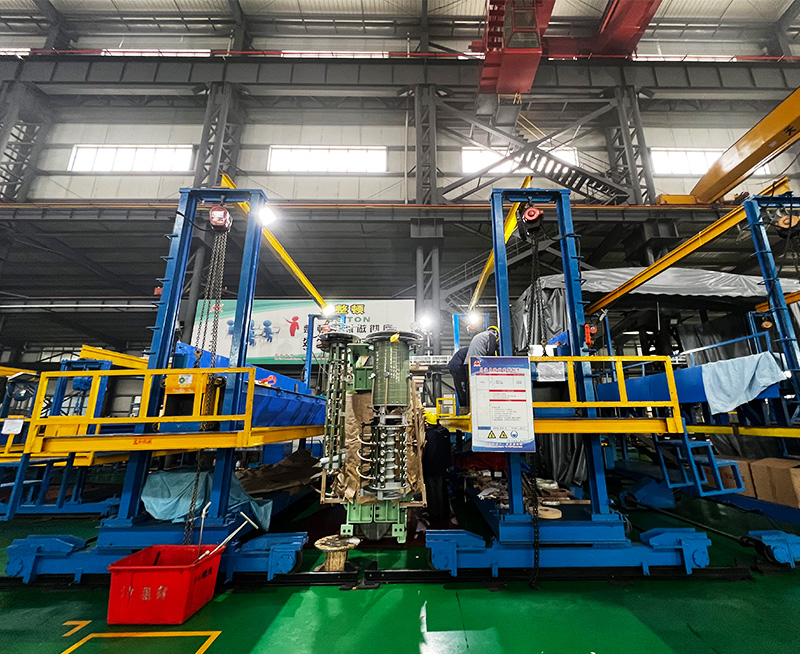- E-mail: admin@yaweitransformer.cn
- Tel: +86-18862719076
The transformer can be directly thrown into the transformer room by a car crane, or a temporary track can be set up with a road log, and then suspended to the temporary track with a three-step lap and a chain, and then pulled into the appropriate position in the room with a chain. The transformer should pay attention to its orientation and distance from the wall size consistent with the drawing, the allowable error is ±25mm, the drawing is not marked, the transverse distance from the wall shall not be less than 800mm, the distance from the door shall not be less than 1000mm. Installation of the transformer bench: Install the transformer on the double pole column, and the root opening of the two poles is 2m. The buried depth is 2m. The platform of the distribution transformer is fixed on the two poles with two or four channels of steel, the height of the platform from the ground is not less than 2.5m, and the plane slope of the platform is not more than 1/100. The waist bar should be wrapped with iron wire with a diameter of not less than 4mm for more than two circles, the winding should be tight, and the distance between the waist bar and the live part should be not less than 0.2m. At the same time, the high voltage cylinder head of the transformer is equipped with dust cover, and the transformer is suspended with warning signs.
Installation of drop-out fuses
The high and low voltage sides of the transformer should be equipped with fuses respectively. The vertical height of the bottom of the high-voltage side fuse to the ground is not less than 4.5m, and the horizontal distance of each phase fuse should not be less than 0.5m. In order to facilitate operation and the fuse tube can fall down smoothly after the fuse is blown, the axis of the fall-type fuse should be inclined to 15° ~ 30° with the vertical line. The vertical distance between the bottom of the low-pressure side fuse and the ground is not less than 5m, and the horizontal distance between each phase fuse is not less than 0.2m. The selection of the drop fuse fuse is selected according to the principle of “ensuring that the distribution transformer internal or high and low voltage outlet bushing is quickly fusible when there is a short circuit”, and the fusing time of the fuse is less than or equal to 0.1s. According to the regulations: the capacity is 100kVA and below, the rated current of the high-voltage fuse is selected by 2 to 3 times the rated current of the transformer capacity; If the capacity is more than 100kVA, the rated current of the fuse on the high voltage side is 1.5 to 2 times of the rated current of the transformer capacity. The fuse on the low voltage side of the transformer is selected according to the rated current on the low voltage side.
Installation of lightning arrester
Use non-gap synthetic insulating jacket metal oxide arrester. The arrester should be installed between the fuse and the transformer, and as close as possible to the transformer. In addition, in order to prevent the invasion of the inverse transform wave and the low-voltage lightning wave, the low-voltage lightning arrester should also be installed on the low-voltage side. To prevent the voltage drop of lightning current on the grounding resistance from superimposed on the residual voltage of the arrester and acting on the transformer insulation, connect the grounding terminal of the arrester, the shell of the transformer, and the neutral point of the low-voltage side with multiple strands of copper core plastic wire with a cross section of no less than 25mm2, and then connect them to the lead wire of the grounding device.
